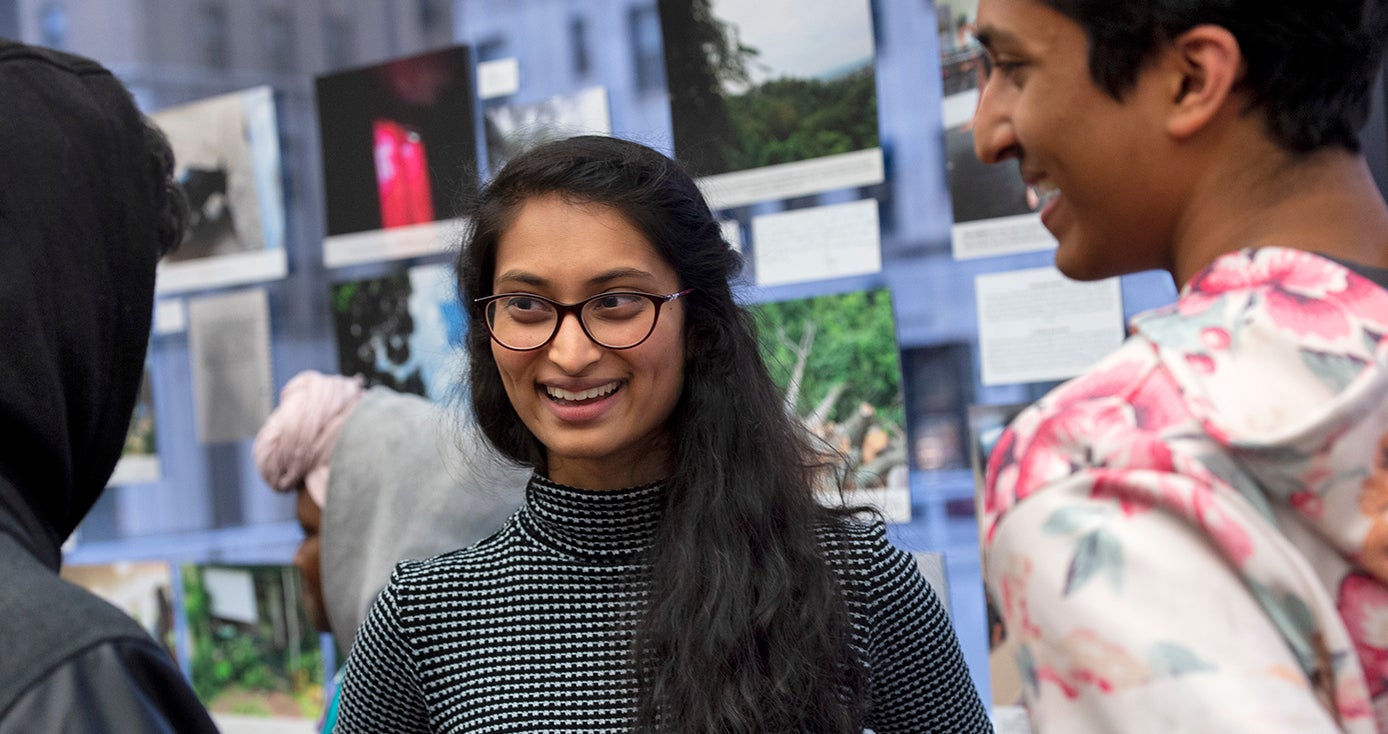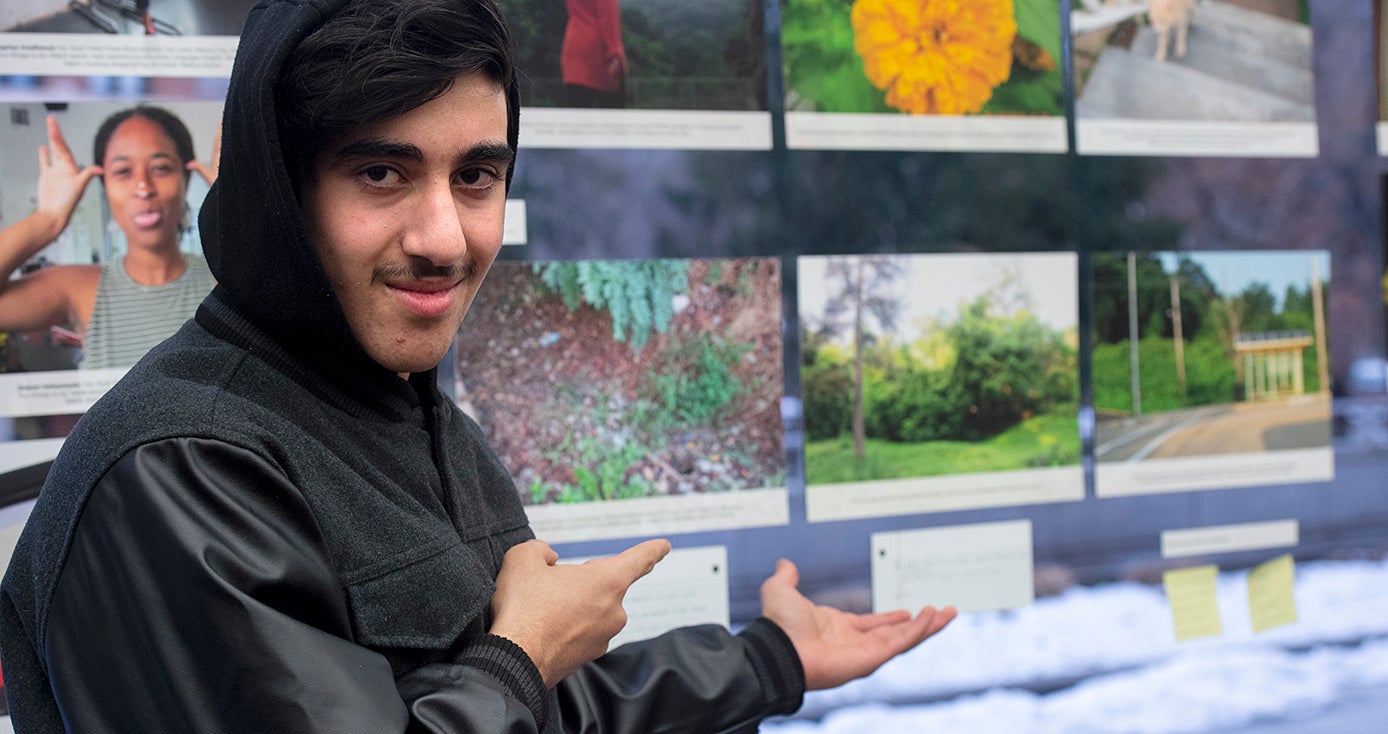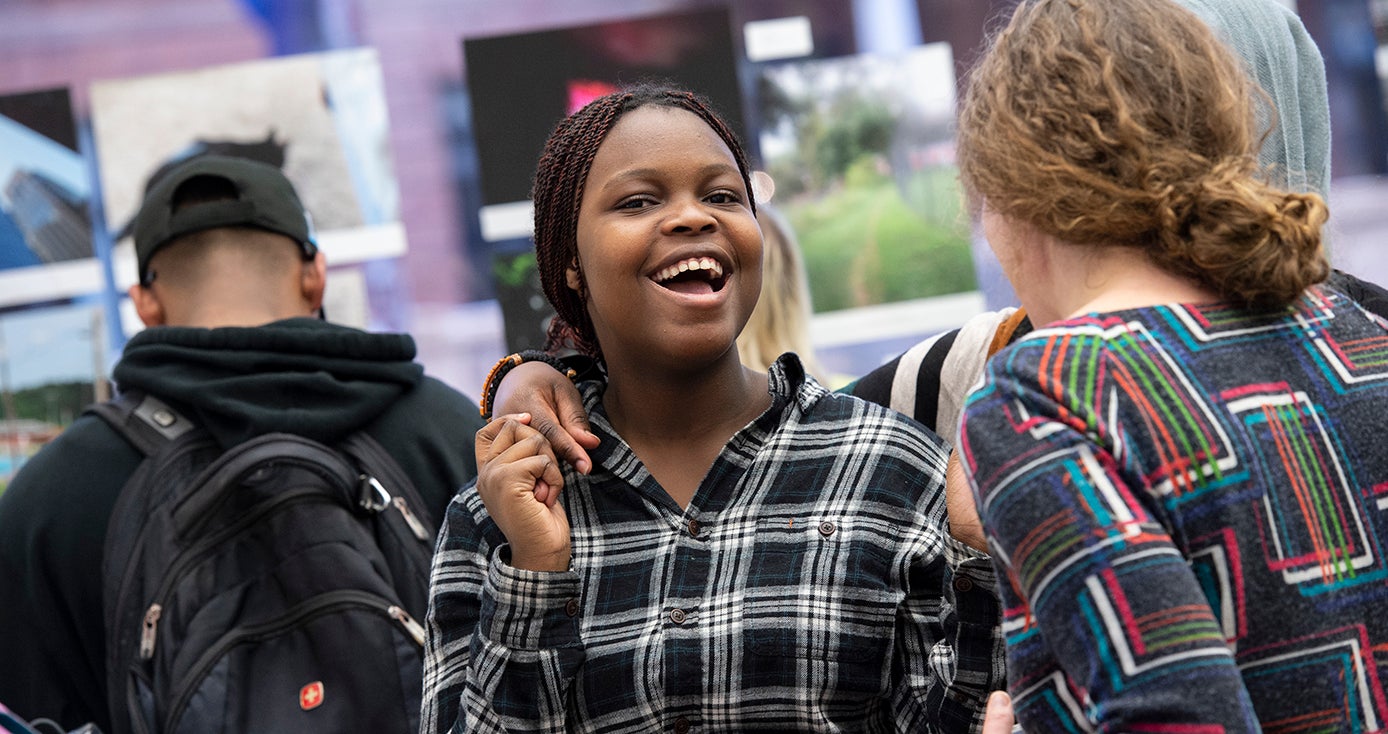
Subscribe to Pittwire Today
Get the most interesting and important stories from the University of Pittsburgh.Student’s Photo Exhibit Asks Refugee Youth, ‘What Does Pittsburgh Mean to You?’
A red curtain blanketing a window. A blue sky after a rainstorm. Trash tangled in the weeds near a bus stop. A grassy, fence-lined path to “wonderland.” Those are some of the images that local refugee middle and high schoolers use to narrate their lives in Pittsburgh.
“This one is my path to wonderland. Mainly I don’t go anywhere. I am mainly inside the house. But when I have to leave home, I have to take this path,” said one 18-year-old, describing her photograph that she titled “My path to wonderland.”
“The way it was built, the way it is, it’s green. I’m an Alice in Wonderland fan, so I called it wonderland.”
That student’s photograph, along with 26 other snapshots, is part of a photovoice project on display in Hillman Library at the University of Pittsburgh. It’s the culmination of a years-long effort headed by Pitt senior anthropology major Prachi Patel.
The discovery phase
During one of her first terms at Pitt, Patel attended an exhibit by Doctors Without Borders where she learned that Pittsburgh has a vibrant refugee and immigrant population — and said she wanted to find a way to pass that knowledge on to others in the community in a creative way. According to the Pennsylvania Refugee Resettlement Program, about 202 refugees resettled in Pittsburgh between October 2017 to September 2018, mainly from Bhutan, Afghanistan and the Democratic Republic of the Congo.
Patel was particularly interested in hearing from younger voices of refugees whose families had resettled in Pittsburgh.
See the exhibit
What Does Pittsburgh Mean to You?: The Power of PRYSE Academy Youth Through a Camera Lens runs through March 31 in 171B Latin American Lecture Room of the Hillman Library. More details on Pitt’s calendar.
“Refugee and immigrant community youth voices may not always get heard,” said Patel, a native of State College, Pennsylvania. “I wanted to look at the intersection between refugee communities and art, and how art can be used to connect those refugee communities with the public.”
Supported by the THINK Research Fellowship through Pitt Honors, Patel conducted extensive research to learn about refugee communities and resettlement in Pittsburgh.
“This was a unique opportunity to take an interest and develop it into a full-fledged research project,” said Patel, who is also triple-minoring in studio arts, creative writing and chemistry. “I learned a lot about the Pittsburgh refugee population and got connected with a lot of people.”
She also researched the photovoice methodology — a way of using photos to tell personal narratives that focuses on people “documenting their own communities on their own terms, as opposed to someone from the outside coming in and taking photos for them,” Patel said.
“A big part about photovoice is giving members of the community cameras and connecting their stories with the public, but also with policymakers,” said Patel.
Bringing the project to life
Patel’s research led her to connect with Jenna Baron (A&S ’13), executive director of the Alliance for Refugee Youth Support and Education (ARYSE), an organization founded by Pitt alums, that aids young refugees as they transition into new lives in Allegheny County, providing support to help them thrive academically and socially.
In the summer of 2018, Patel volunteered as a summer camp counselor at ARYSE’s summer camp program, Pittsburgh Refugee Youth Summer Enrichment Academy (PRYSE), where she launched her photovoice project.
Patel’s campers were local high school and middle schoolers whose families come from a range of countries, including Yemen, Nigeria and Myanmar.
After teaching her campers photography skills and ethics, Patel distributed cameras to her students and gave them an important homework assignment each week: Photograph what Pittsburgh means to you — the good and the bad.
Ten of her students chose their favorite photos to hang on display in the Latin American Lecture Room of Hillman Library through the month of March, in an exhibit made possible through Patel’s ACT Research Fellowship through Pitt Honors.
Some of the photos display calls to action. Said Hamza, age 14, “When I walk to the bus stop to go to camp, and I saw that trash in the grass. I just think about, it’s nice to learn not to throw trash, and clean the country.”
Others are simply examples of finding beauty in everyday life. “This one I took after a long, long rain at night. In the morning, it became sunny and beautiful. I thought, the sky is good, I should take a picture,” mused one student, pointing to her photograph. “I didn’t actually think it would come out good.”
For Tomi, age 15, having a camera gives her a sense of power. “It gives me power to say yes, my voice matters. It gives me power to express myself. Yes, I have a chance to make a change that I want to see. The camera gives me the opportunity to start to make a change.”
“What Pittsburgh means to me: it’s a home to many races. Before you judge someone, you have to know who they are,” Tomi said. “Don’t just judge a book by its cover.”




